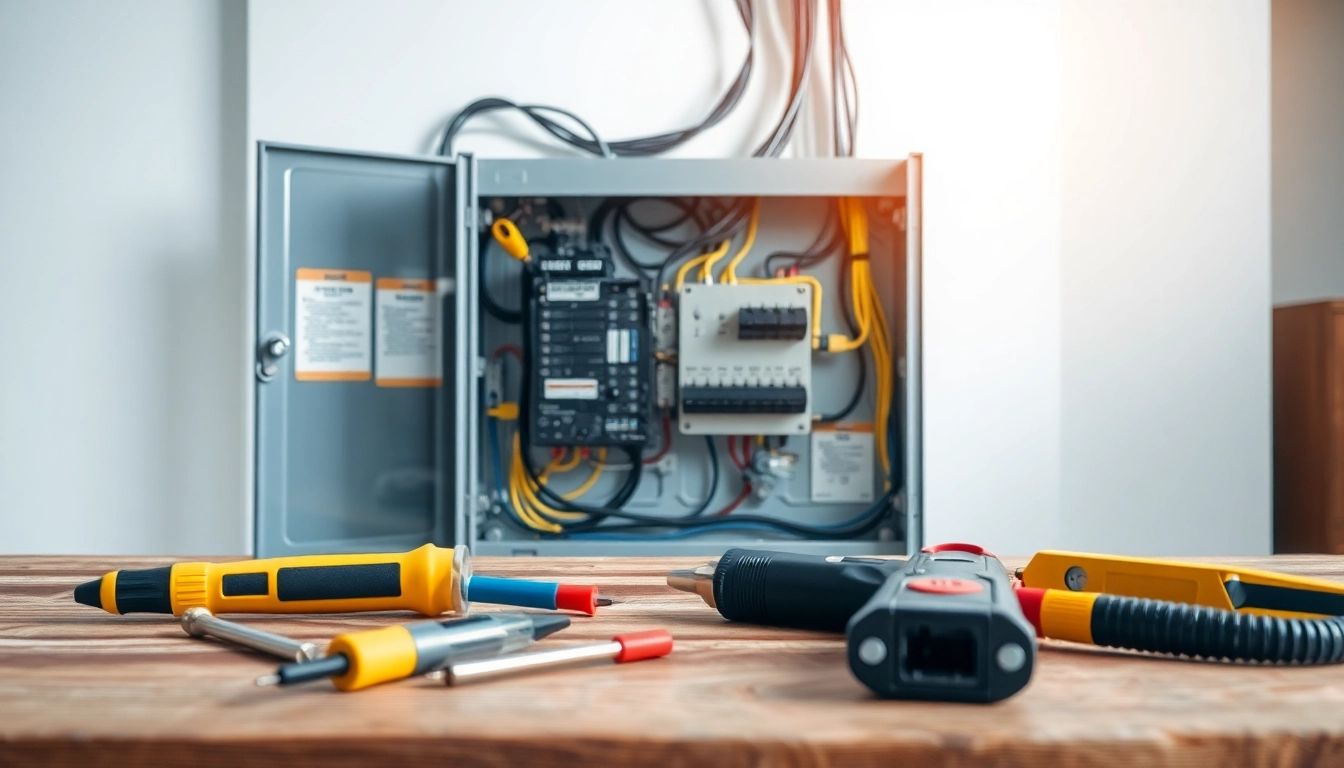1. Introduction to Electrical Panels
Electrical panels, also known as breaker boxes or fuse boxes, play a crucial role in the electrical systems of our homes and businesses. They act as the central hub for managing and distributing electrical power, ensuring that electricity flows efficiently and safely throughout a property. Given the essential function they serve, understanding electrical panels is vital not only for homeowners but also for anyone involved in construction or renovation projects.
1.1 What is an Electrical Panel?
An electrical panel is a metal box that houses circuit breakers or fuses, allowing electricity to be safely distributed to different circuits within a building. It connects directly to the main power supply and divides the electrical current into separate, controllable circuits. Each circuit can be turned on or off through its breaker or fuse, providing safety in case of overloads or shorts.
1.2 Components of an Electrical Panel
Understanding the components of an electrical panel can help homeowners recognize the importance of maintenance and upgrades. Key components include:
- Main breaker: This serves as the primary disconnect and prevents overload by cutting off power to the entire panel.
- Circuit breakers: These devices protect individual circuits and can automatically shut off when they detect problems.
- Bus bars: Conductive metal bars that distribute power to each circuit.
- Grounding bar: Provides a safe path for electrical fault currents, preventing electrical shock.
- Panel enclosure: The outer casing that protects the components from damage and keeps moisture out.
1.3 Importance of Upgrading Your Electrical Panel
Upgrading an electrical panel is essential for several reasons: enhanced safety, increased power capacity, and improved compliance with modern electrical codes. Older panels may not accommodate the increased electrical demands of today’s appliances and technology, leading to potential safety hazards like electrical fires or equipment damage. By upgrading, homeowners not only ensure safety but can also improve the efficiency of their electrical systems.
2. Signs You Need a New Electrical Panel
Recognizing when it’s time to upgrade your electrical panel is vital for maintaining safety and efficiency in your home. Some clear indicators that an upgrade is required include:
2.1 Common Warning Signs
Several signs suggest your electrical panel is due for an upgrade, including:
- Frequent circuit breaker trips: This indicates the current load exceeds the panel’s capacity.
- Flickering lights: Inconsistent power can be a sign of faulty connections.
- Burning smells: Any odor of burning insulation or wire could indicate serious electrical issues.
- Rust or corrosion: This can affect the functionality of circuit breakers and expose wiring to danger.
2.2 How Age Affects Electrical Panels
Electrical panels typically have a lifespan of 20-30 years. As they age, components can wear out or become less efficient. Older models may not provide sufficient capacity for modern electrical demands, necessitating an upgrade for safety and performance.
2.3 Electrical Panel and Home Safety
Safety should always be the priority when it comes to electrical systems. An outdated or faulty electrical panel can lead to hazardous situations, such as electrical fires, shock hazards, and equipment damage. Regular inspections can help detect problems early and ensure necessary upgrades are made.
3. Types of Electrical Panels
3.1 Standard vs. Smart Electrical Panels
Electrical panels can generally be divided into two categories: standard and smart panels. Standard panels comprise traditional circuit breakers that manage the flow of electricity. Smart panels, however, come equipped with technology that allows homeowners to monitor their energy usage in real time, providing insights into how energy is consumed within the home. This can lead to improved energy efficiency and cost savings over time.
3.2 Comparison of Panel Brands
Several brands dominate the electrical panel market, including Square D, Eaton, and Siemens. Each offers models with varying capacities and features. For example, Square D is well-known for its reliable and user-friendly options, while Eaton panels often contain advanced safety features and smart technologies. When selecting a brand, it’s crucial to consider the specific needs of your home and the quality and reputation of the manufacturer.
3.3 Selecting the Right Panel for Your Needs
Selecting the appropriate electrical panel depends on your household’s energy consumption and future needs. Consider factors such as:
- Current and anticipated future electrical loads
- The number of circuits required
- Space available in your home for the panel
- Compliance with local building codes
4. Upgrading Your Electrical Panel
4.1 Steps to Upgrade Your Electrical Panel
Upgrading your electrical panel involves several steps:
- Assessment: Evaluate your current electrical needs and consult with a licensed electrician.
- Choose a new panel: Select a panel that fits your energy demands and complies with local codes.
- Schedule the installation: Work with a licensed electrician to schedule a suitable time for the upgrade.
- Installation: The electrician will disconnect power, remove the old panel, and install the new one, ensuring all connections are secure.
- Inspection: After installation, have the panel inspected by local building authorities to ensure compliance.
4.2 Hiring a Professional vs. DIY
While some may consider a DIY approach, upgrading an electrical panel is typically best left to professionals due to safety concerns and local regulations. Licensed electricians have the training and expertise to handle complicated electrical installations safely and in compliance with building codes.
4.3 Costs Associated with Electrical Panel Replacement
The costs for electrical panel upgrades can vary significantly based on several factors, including the complexity of the job, the type of panel selected, and local labor rates. On average, homeowners should budget between $800 and $2,500 for panel replacement, which includes both the panel and installation costs. It’s advisable to obtain multiple quotes to ensure a fair price.
5. Maintenance and Care for Your Electrical Panel
5.1 Regular Inspection Checklist
Regular maintenance can prolong the life of your electrical panel and ensure safety. Here’s a checklist for periodic inspections:
- Check for rust or corrosion.
- Ensure circuit breakers are functioning without issues.
- Look for any signs of overheating, such as discoloration or burning smells.
- Verify the grounding and bonding connections are secure.
- Inspect for any loose wires or connections.
5.2 Cleaning and Maintaining Your Panel
Keeping your electrical panel clean is essential for preventing dust buildup, which can cause overheating. Use a soft cloth to wipe the exterior and ensure no obstructions are present around the panel that could hinder airflow.
5.3 Common Issues and Troubleshooting
Homeowners may encounter several common issues with electrical panels. Some solutions include:
- Tripped breakers: Often caused by overloaded circuits; redistribute the load to different circuits.
- Flickering lights: Check for loose or faulty connections and replace any defective bulbs.
- Burning smells: Immediately turn off the power and seek professional help to prevent a potential fire.








